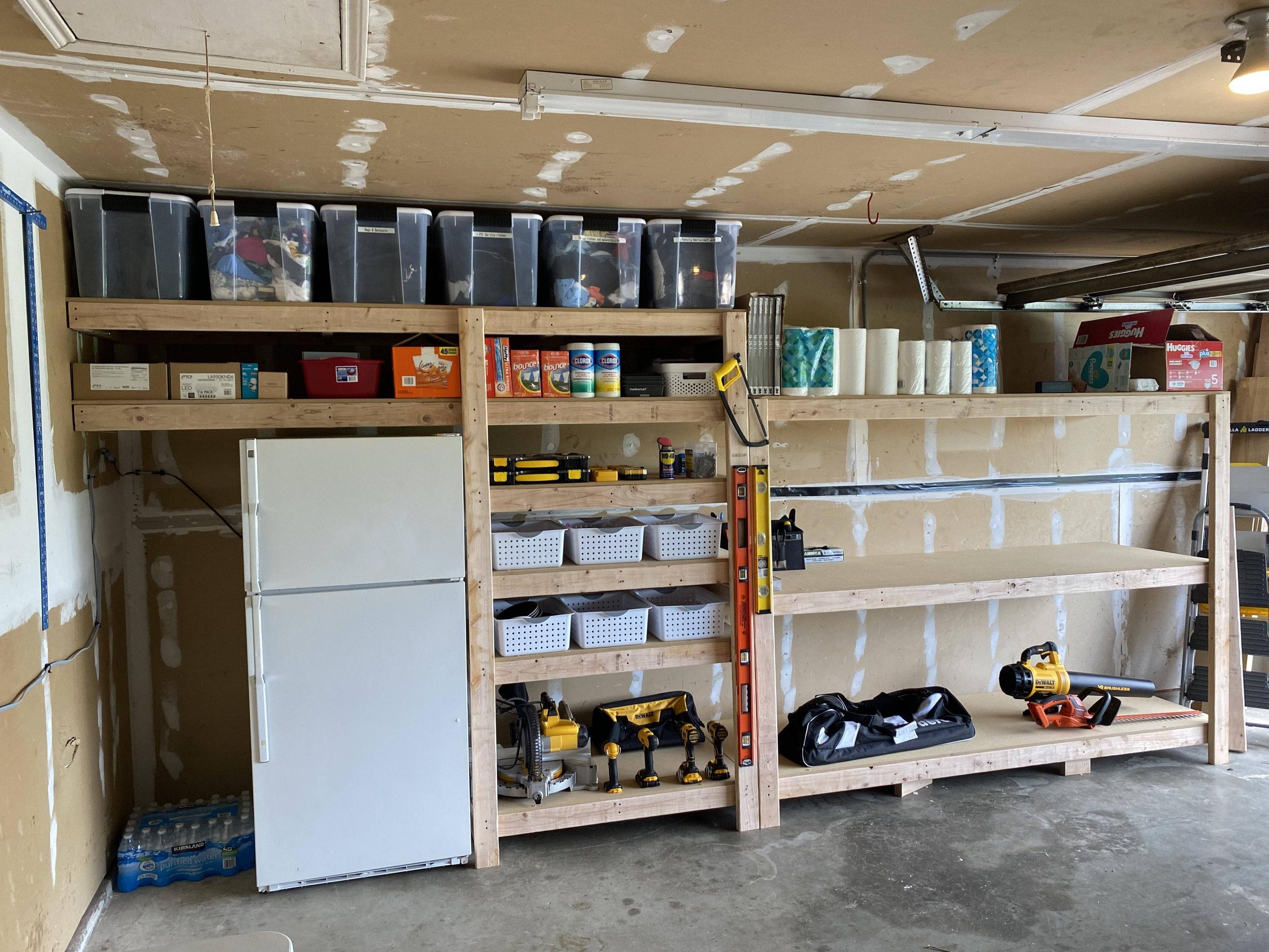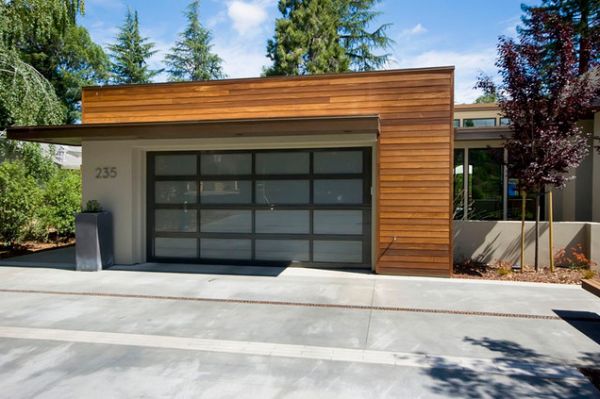
Whether you are building a new home or simply replacing your old one, the garage door is an important part of the design. It is not only essential to the look and feel of your home, but also to the security and productivity of the space. If you are considering installing a new garage door, you should take the time to consider the material, color, and finish that will best suit your needs. There are many options available, from glass to wood, and they all provide different benefits.
Aside from securing your home, garage doors can also help to improve the energy efficiency of your home. If you are considering a more modern design, choose a style that will complement your house's architecture. These styles include tilt-up, canopy, and sliding. Modern designs often have clean lines and aluminum frames or acrylic frames with tempered glass panels.
A carriage-style door will give you a traditional look. These are similar to French doors, but they hang from hinges. When they open, these doors look much like large barn doors. Their popular design is a result of their versatility. They can be found in many homes. You will need to leave enough clearance for the door opening and closing.

Wooden carriage-style garage doors are most commonly made of wood. Some are all wood, others have an aluminum- or fiberglass cladding. All-wood doors tend to be more expensive that their composite counterparts. But they are more durable and less likely to rot. They tend to be stronger and less likely to rot.
Because aluminum garage doors can withstand the elements, they are very durable. They are resistant to rusting, rot and warping in harsh Midwest conditions. They can be painted if they become yellowed. Fiberglass isn't as strong, but it is less likely to splinter and crack.
Your garage door's lifespan will also depend on the type of spring that you choose. Spring life is generally three to seven years. However, poor maintenance and heavy loads can reduce the lifespan of torsion springs. Additionally, springs that are located in humid areas will have a shorter cycle life.
Most garage doors come with at least one tension spring. These springs store tension and help lift the door. The springs can be unwound once the door has been raised. The springs attach to cables that wrap around grooves of cable drums. Use lubricant to extend the life of the springs. Grease can cause wheels to "skate" when they are on the track. This can lead to a decrease in spring life.

Side-hinged garage doors are another common option. These doors are either manually operated or can be automated using a special remote. Swinging garage door are more difficult to automate and are often used in garages that have limited headroom.
FAQ
What is the cost of tile for a shower?
You might want to go big if you are going to do it yourself. A full bathroom remodel is considered an investment. However, quality fixtures and materials are worth the long-term investment when you consider how beautiful a space will be for many years.
You can make a big impact on how your room looks. Here's how to choose the right tiles for your home, regardless of whether it's a small renovation or major project.
First, you need to choose which flooring material you want. There are many options for flooring, including ceramics, porcelain, stone and natural wood. Next, choose a style such as a classic subway tile or a geometric pattern. Next, choose a color palette.
You'll probably want to match the tile to the rest of the room for a large bathroom remodeling job. You might choose white subway tiles in the bathroom and kitchen, but use darker colors in other rooms.
Next, decide the scope of the project. Do you think it is time to remodel a small powder-room? Or would you prefer to add an extra bedroom in your master suite with a walkin-in closet?
Once you have decided on the scope of the project, visit your local store to view samples. By doing this, you will get an idea of the product's installation methods.
You can also shop online to find great deals on porcelain and ceramic tiles. Many retailers offer free shipping and discounts on bulk purchases.
Why should I remodel rather than buying a completely new house?
Although houses are getting cheaper each year, you still have to pay the same amount for the same square footage. You will pay more for the extra square footage, even though you might get more bang for you buck.
Maintaining a house that doesn’t need much maintenance is cheaper.
Remodeling can save you thousands over buying a new house.
Remodeling your home can make it more comfortable and suit your needs. You can make your home more comfortable for you and your family.
What are the main components of a full kitchen renovation?
A full kitchen remodels more than just a new sink and faucet. You will also need cabinets, countertops and appliances as well as lighting fixtures, flooring, plumbing fixtures, and other items.
A full kitchen remodel allows homeowners to update their kitchens without having to do any major construction. This allows the homeowner to update their kitchens without having to demolish any existing structures, making it easier for the contractor as well.
Many services are required for kitchen renovations, such as electrical, plumbing and HVAC. Complete kitchen remodeling may require multiple contractors, depending on how extensive the renovation is.
It is best to work with professionals who have experience in kitchen remodeling. There are often many moving parts in a kitchen remodel, so small problems can cause delays. DIY projects can cause delays so make sure you have a backup plan.
Is $30000 enough for a kitchen remodel?
A kitchen remodel costs anywhere from $15000 up to $35000 depending on what you are looking for. You can expect to spend more than $20,000. If you are looking for a complete overhaul of your kitchen, it will cost more. You can get a complete kitchen overhaul for as little as $3000 if you just want to replace the countertops or update your appliances.
A full-scale renovation typically costs between $12,000 and $25,000 on average. There are ways to save money but not sacrifice quality. An example is to install a new sink rather than replacing an existing one that costs around $1000. You can also buy used appliances at half the cost of new ones.
Kitchen renovations can take longer than other types projects so plan ahead. You don't want your kitchen to be finished halfway through.
Start early. Begin by looking at all options and getting estimates from multiple contractors. You can then narrow your choices by price, availability, and quality.
Once you have identified potential contractors, request estimates and compare their prices. The lowest-priced bid isn't always the best choice. It is important that you find someone with comparable work experience to provide an estimate.
Make sure you include all extras in your final cost calculation. These may include additional labor, material charges, permits, etc. You should be realistic about what you can spend and stick to your spending budget.
You can be open about your dissatisfaction with any of these bids. Tell the contractor if you are not satisfied with the first quote. Give him or her another chance. Don't let pride stand in the way of saving money.
What is the cost of completely renovating a kitchen?
It's possible to wonder how much a home remodel would cost if you are thinking of starting one.
The average kitchen renovation cost is between $10,000-$15,000. There are ways to save on your kitchen remodel while still improving the space's look and feel.
One way to reduce costs is to plan ahead of time. This includes choosing a design style and color palette that fits your lifestyle and budget.
An experienced contractor can help you cut down on costs. A tradesman who is experienced in the field will be able to guide you through each stage of the process.
It would be best to consider whether you want to replace or keep your existing appliances. Remodeling a kitchen can add thousands of pounds to its total cost.
Another option is to consider purchasing used appliances. Buying used appliances can help you save money because you won't have to pay for installation.
Shopping around for fixtures and materials can help you save money. Many stores offer discounts during special events, such as Black Friday or Cyber Monday.
How long does it take to remodel a bathroom?
It usually takes two weeks to remodel a bathroom. The size of your project will affect the time taken to remodel a bathroom. You can complete smaller jobs like adding a sink or vanity in a few days. Larger projects such as removing walls, laying tile floors, or installing plumbing fixtures may require several days.
It is a good rule to allow for three days per room. So if you have four bathrooms, you'd need 12 days total.
Statistics
- 57%Low-end average cost: $26,214Additional home value: $18,927Return on investment: (rocketmortgage.com)
- Attic or basement 10 – 15% (rocketmortgage.com)
- According to a survey of renovations in the top 50 U.S. metro cities by Houzz, people spend $15,000 on average per renovation project. (rocketmortgage.com)
- 5%Roof2 – 4%Standard Bedroom1 – 3% (rocketmortgage.com)
- $320,976Additional home value: $152,996Return on investment: 48%Mid-range average cost: $156,741Additional home value: $85,672Return on investment: (rocketmortgage.com)
External Links
How To
How to Remove Tile Grout from Floor Tiles
Most people don’t realize they use tile grouting. It is used to seal the joints between the tiles. There are many types available today. Each is used for a specific purpose. We'll show you how we can remove grout from floor tiles.
-
Before you start this process, make sure that you have all the necessary tools. It is best to have a grout cutter, grout scraper, and some towels.
-
Now, you will need to remove any dirt or debris from under the tile. To remove grout, use the grout cutter and gently scrape any pieces. It is important not to damage tiles.
-
After everything is cleaned up, use the grout scraper for any remaining grout. Step 4 can be completed if you have no grout.
-
After all the cleaning is done, it's time to move on. One of the rags can be used to soak in water. The rag should be completely dampened. Once the rag is wet, you can dry it by wringing the cloth.
-
Place the wet paper towel at the joint of the tile and wall. The grout will begin to crumble if you press down hard on the rag. Slowly pull the rug towards you, then continue pulling the rag back and forth until the grout has been removed.
-
Continue repeating steps 4 through 5 until all grout is removed. Rinse the ragout. Repeat the process if necessary.
-
Once you have finished removing all the grout, wipe down the surface of the tiles with a damp cloth. Let dry thoroughly.